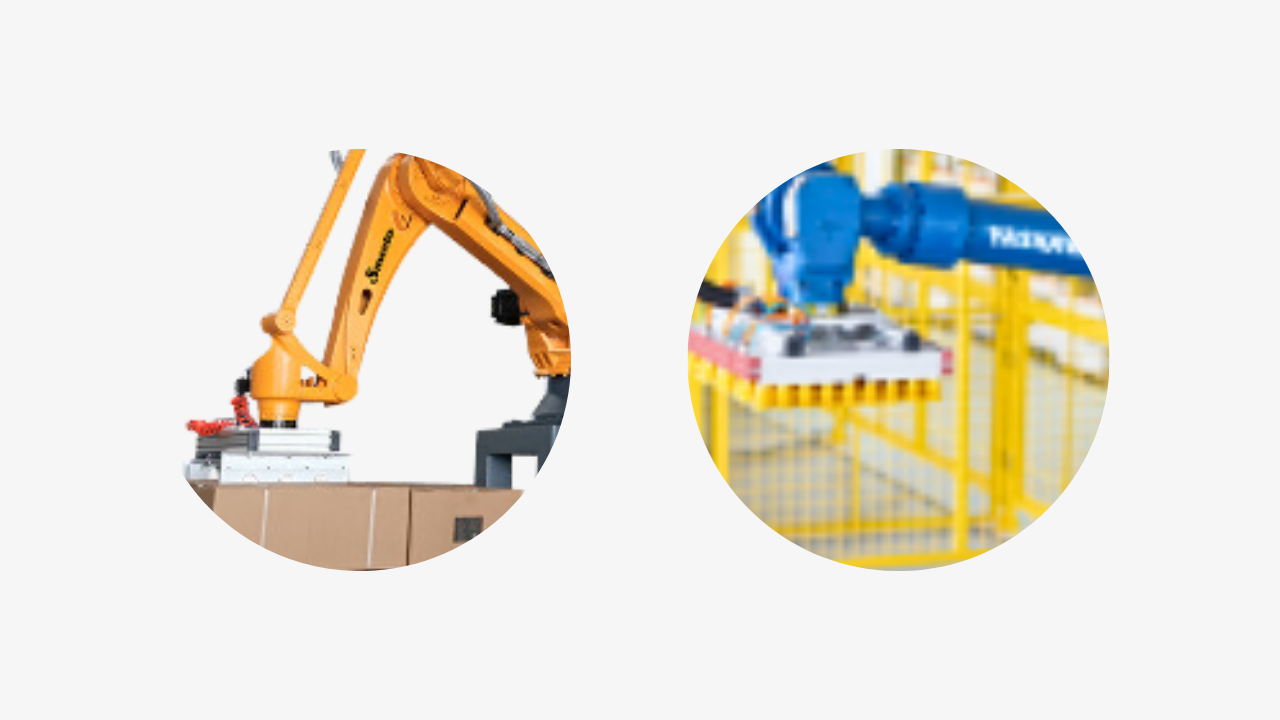Application and Key Components of Palletizing Robots in Various Industries
2025-03-03
Palletizing robots are widely utilized across multiple industries such as animal feed, fertilizers, grains, food, beverages, chemicals, and building materials. These robots play a crucial role in streamlining production processes by efficiently stacking products onto pallets. Let's delve into the key components and advantages of palletizing robots:


Key Components:
1. Robotic Grippers:As an integral part of palletizing robots, robotic grippers (also known as claws or hands) significantly influence the overall performance of these machines. The performance parameters of robotic grippers, including high reliability, simple and innovative structure, and lightweight, are crucial for the efficient operation of palletizing robots. Different types of grippers can be designed according to the specific products, ensuring high efficiency, quality, wide applicability, and low cost.
2. Common Types of Robotic Grippers:
Clamping-Type Grippers: Primarily used for high-speed bag stacking, these grippers are suitable for stacking bagged materials such as flour, feed, cement, and fertilizers.
Plate-Type Grippers: Ideal for box stacking, these grippers are used for stacking entire boxes or regular box-packaged items and can handle single or multiple boxes at once.
Vacuum Suction-Type Grippers: Designed for objects suitable for suction, these grippers are used for items that can be lifted by suction cups, such as film-wrapped packaging boxes, canned beer boxes, plastic boxes, and cardboard boxes.
Combination-Type Grippers: Suitable for collaborative gripping and stacking at multiple workstations, these grippers offer flexible combinations of the above three types, meeting the requirements of multiple workstation stacking.
Advantages:
High Productivity:Palletizing robots enhance productivity by leveraging their performance, construction, and specialized tools. They offer rapid and extensive motion ranges, improving production efficiency. Adopting a hollow structure helps prevent cable failures, while specialized software for palletizing can automatically generate stacking programs, facilitating easy confirmation of stacking status, thereby demonstrating the high productivity of robots.
Wide Range of Handling:Palletizing robots can handle objects ranging from 3kg to 300kg, providing flexibility and versatility for various handling tasks and operating environments. This versatility extends from small-scale food items to various large-scale industrial products, enhancing applicability and liberating humans from strenuous manual labor across industries.
Simple Maintenance:Improvements in fault diagnosis and construction simplify maintenance, reducing repair and troubleshooting times, as well as component replacement times.
Space Efficiency and High Production Capacity:Palletizing robots occupy minimal space while offering significant production capabilities.
Fully Automated Operation with PLC Control:The entire robot operation is controlled by programmable logic controllers (PLCs), ensuring fully automated operation.
Adaptability to Various Pallet Types with Easy Adjustment:Palletizing robots can adapt to multiple pallet types, and adjustments are easily made.
Multiple Protections with Touch Screen Control:Palletizing robots feature multiple protective measures and can be controlled via touch screens.
Segmented Conveyor Chain Drive with Extendable Output Section:The adoption of segmented conveyor chain drives allows for the extension of the output section as needed.
Programmable Palletizing Robots with Support for Multi-Axis Motion:Palletizing robots are programmable and support multi-axis motion, offering flexibility and ease of operation.